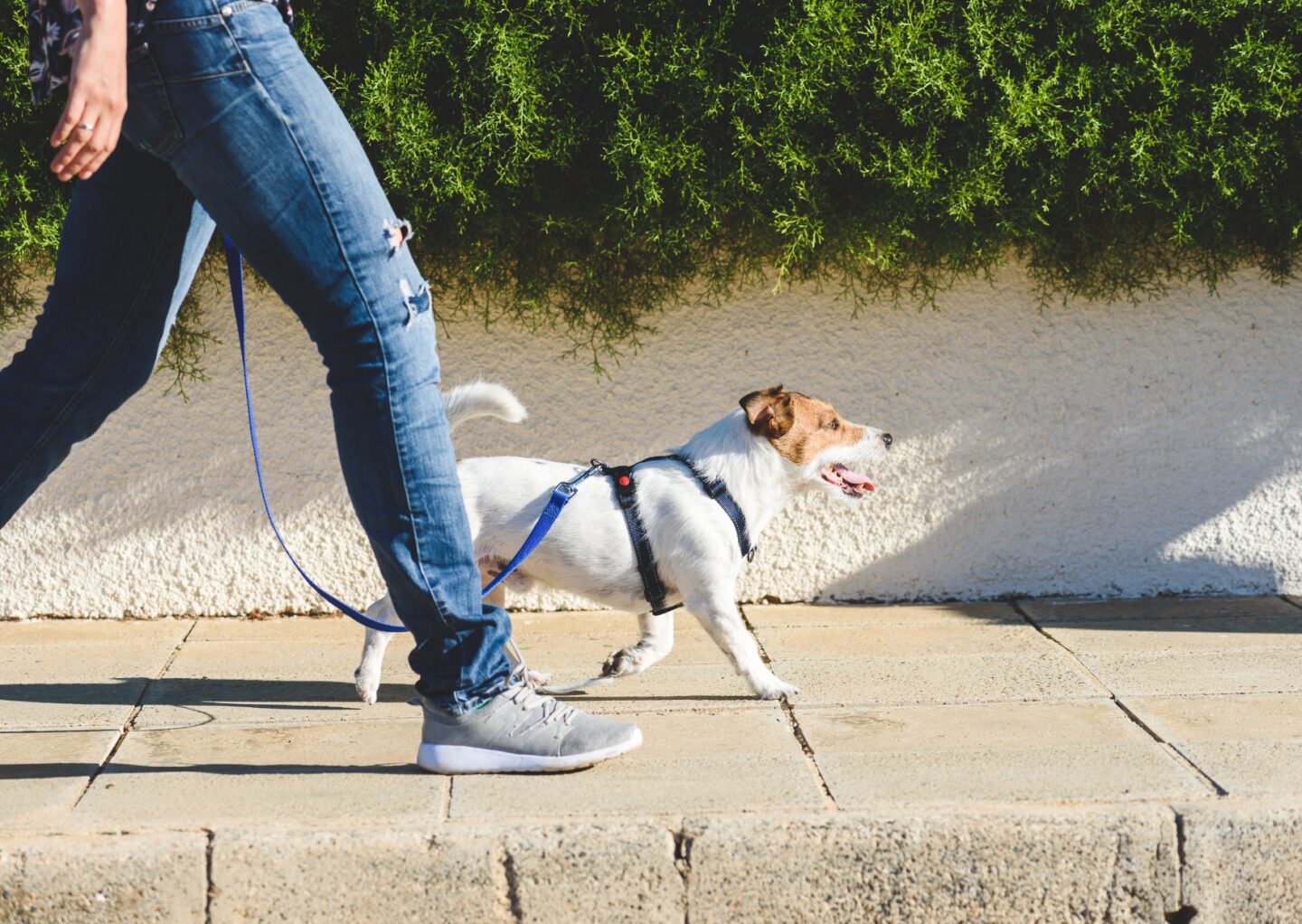Walking a dog that pulls can be exhausting and embarrassing—especially when you’re a trainer. I’ve been there, feeling my arm strain as my dog pulls me in every direction, worrying about what others might think of my skills.
Over years of pet sitting and working with countless dogs in different environments, I learned to create tailored plans for success by building on what worked with each dog. This approach allowed me to consistently help dogs transition from pulling to walking calmly on a loose leash. Now, I’ve compiled this knowledge into a 6-week loose leash walking program designed to tackle even the strongest pullers.
What Can You Expect?
This course will guide you step by step to create noticeable improvements, even if your dog has been pulling for years. We’ll focus on:
- Building a solid foundation in low-distraction environments.
- Teaching your dog to focus on you.
- Strategies for managing distractions and tight leashes.
- Changing direction smoothly with U-turns.
- Walking as a team, no matter where you go.
- Troubleshooting common challenges so you can keep making progress.
With my program, you’ll move from stressful, chaotic walks to calm, enjoyable outings where both you and your dog are on the same page.
Why Take This Course?
One of my students shared her experience:
“Hi Anna! I can’t thank you enough for your observations and encouragement. Your feedback was always so thoughtful, celebrating every win and helping us through challenges. This course freed up my mental energy—I didn’t have to plan everything alone. Instead, I could focus on practicing with Duncan and enjoying our progress. Thank you for helping us walk together with confidence!“
– Katherine and Duncan
Why Learn with Me?
I’m Anna Bartosik, a Tromplo instructor since 2020, with a background in Applied Behavior Analysis and over a decade of experience working with animals—dogs, cats, horses, and more. My passion is breaking down complex training concepts into clear, actionable steps that empower you to succeed.
In this course, you’ll receive:
- Daily feedback as a premium student, so we can celebrate wins, adapt to challenges, and keep progressing.
- A supportive, practical training plan that works with your busy life.
Join the Journey
This course isn’t just about loose leash walking—it’s about building a better relationship with your dog. If you’re ready to enjoy your walks and leave embarrassment behind, sign up today and take the first step toward stress-free strolls!
Course Testimonials
I cannot recommend Anna enough as an instructor, observer, cheerleader, and free-thinker. Duncan and I already had some exposure to loose leash walking training but I just kept struggling to progress. Anna gently helped me to become aware of my expectations and how to free myself from “we should be able to do this” to the benefit of my dog and myself. She gave me permission to take sniffy walks at his pace and that led to opportunities for Duncan to engage and progress his understanding of when to work and what that work looks like. Her observations and feedback are so clear that it’s almost effortless to add her suggested approximations, yet she is always available to discuss if things go sideways, as they do. Anna also helped suggest some complimentary fitness training to encourage Duncan’s confidence on certain surface textures. I am so satisfied with her instruction from my reframe of walks to our improved confidence and continued practice. I wish I could take a little “pocket Anna” with us on our loose leash walking progression, but I know I can take what I have learned and help me and my dog take some lovely, peaceful walks.
April 11, 2024

